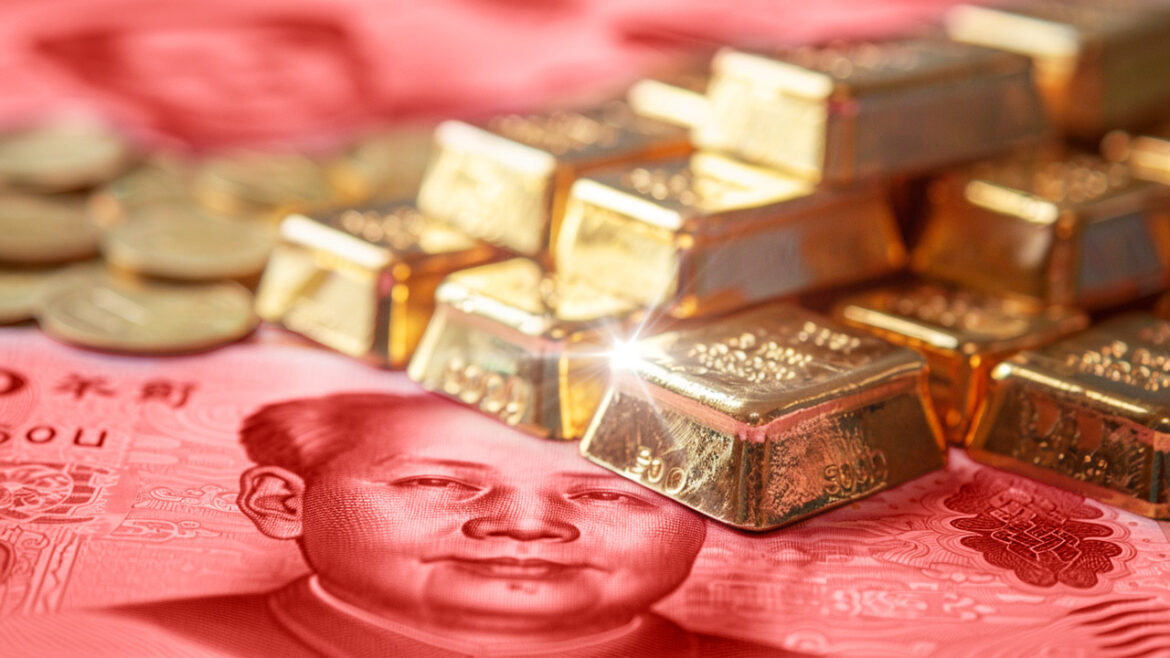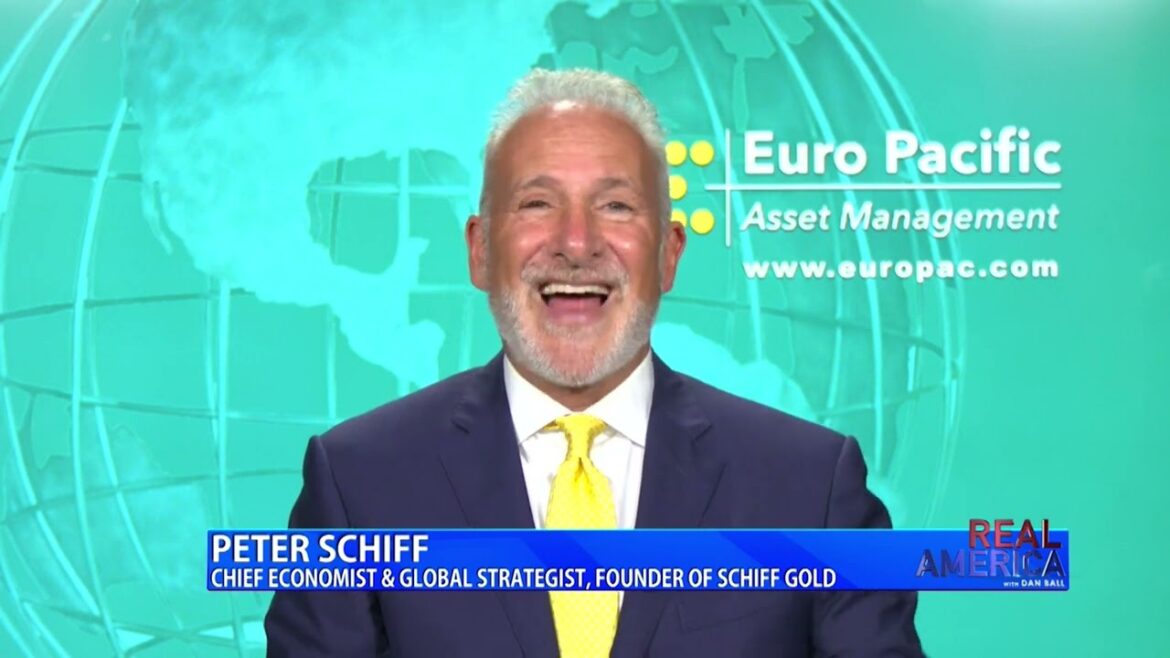Gold has all the potential to go unprecedentedly high. But silver will be gold on
Site:
Precious metals news
The US labor market outperformed expectations last week, with fewer Americans applying for unemployment benefits than anticipated. Despite a backdrop of aggressive Federal Reserve rate hikes aiming to cool inflation, initial jobless claims surprisingly fell to 211,000 from an expected 215,000. This decline hints at a persistently tight labor market, albeit with a slight increase in the time it takes for some to find new employment post-layoff.
 Silver Will Be GONE In The Blink Of An Eye...There's A LOT LESS Than People Think!
Silver Will Be GONE In The Blink Of An Eye...There's A LOT LESS Than People Think!Apr 11, 2024 - 09:51:44 EDT
In this video, Alan Hibbard explores the current trends and future outlooks in the gold and silver markets, emphasizing the dramatic price increases.
Zimbabwe has debuted the new ZiG, its new gold-backed currency. Launching with a robust start, the ZiG appreciated to $13.45 from its initial $13.56 against the U.S. dollar in just a week, marking a promising 0.8% gain. This early success is a beacon of hope for an economy previously marred by inflation and currency instability. Backed by significant gold and foreign currency reserves, the ZiG is more than just currency; it's a cornerstone of Zimbabwe's strategy for economic stabilization and growth.
 Inflation Fears Spark Rally in Gold and Oil, Casting Doubt on Fed's Strategy
Inflation Fears Spark Rally in Gold and Oil, Casting Doubt on Fed's StrategyApr 10, 2024 - 17:01:06 EDT
Recent data indicating persistent inflation has impacted financial markets, with a notable rise in consumer price index (CPI) causing stocks and bonds to fall. In response, investors have turned to gold, oil, and cryptocurrencies as safeguards against inflation, leading to a rally in these assets. This movement has raised the yields on 10-year Treasuries to their highest since November and decreased the S&P 500 by about 1%. Energy companies, benefiting from the situation, remind us of strategies used in previous inflationary periods. The increasing prices in commodities, combined with geopolitical tensions, have fueled doubts about Federal Reserve Chair Jerome Powell's ability to achieve a "soft landing" for the economy. Critics argue that the recent surge in asset values is counterproductive to the Fed's efforts to control inflation, encouraging excessive spending among consumers and investors.
Gold's recent trading saw a downturn after hitting nine consecutive intraday record highs, influenced by March’s CPI indicating persistently high prices. Francisco Blanch of Bank of America Securities highlighted the significant role of central bank and Chinese retail buying in gold's surge, attributing it partly to cyclical factors but mainly to a structural trend driven by geopolitical tensions between the West and countries like Russia and China.
Copper prices reached a 2024 peak, with May delivery hitting $4.323 per pound in New York, marking its highest level since June 2022. The London Metal Exchange saw three-month copper prices increase by 0.6% to $9,477 per metric ton. This surge in copper prices is significant as copper demand is often viewed as an indicator of global economic health, suggesting a positive outlook on the economy's strength.
Apr 10, 2024 - 16:11:32 EDT
Bank of America forecasts a significant rise in gold prices, reaching $3,000 per ounce by 2025, driven by robust demand from central banks and investor anticipation of interest rate cuts by the Federal Reserve. The bank's commodity strategist, Michael Widmer, points out gold's strong performance despite global central banks' monetary tightening.
HSBC Chief Commodities Analyst James Steel discusses the gold market’s latest surge, particularly in China and India, as geopolitical risks swirl around other areas of the broader market. James speaks to Tom Keene and Paul Sweeney on Bloomberg Radio.
In investing, “Buy low, sell high” is among the most well-known sayings, and generally, it’s good advice. But with gold still holding near its historic all-time highs, central banks led by China are bucking the classic adage and smash-buying more, buying the top to fortify themselves against a global monetary and financial blow-up.
 Gold Retreats Off Record Highs After Higher than Expected Inflation Data
Gold Retreats Off Record Highs After Higher than Expected Inflation DataApr 10, 2024 - 12:16:01 EDT
Gold prices fell from their peak following the release of U.S. inflation data that was hotter than anticipated, boosting the U.S. dollar and Treasury yields. This development dampened the market's hopes for an imminent rate cut by the Federal Reserve. With the consumer price index for March rising more than expected, gold, which does not yield interest, became less appealing to investors.
Gold's recent ascent to record highs has captivated our attention again. Amidst a backdrop of mounting public debt, inflation fears, and central banks' dovish tendencies, gold's allure strengthens. However, these factors have been in play for years, prompting us to ask: Why is gold surging now? A recent analysis by Louis-Vincent Gave at Gavekal offers a compelling perspective, pointing not towards the usual suspect, the Federal Reserve, but towards the Bank of Japan.
When John Bogle died in 2019, people around the world mourned. Bogle created the Vanguard Group and made the index fund mainstream. Index funds are investment vehicles that invest in a class of investments as a whole, rather than trying to predict what specific stocks or securities will do best. So an investor could invest in an index fund that represented American companies as a whole rather than trying to predict whether Disney, Apple, or Meta would have a better quarter.
In March, inflation rates exceeded forecasts, as the US Consumer Price Index (CPI) surged by 0.4% from the previous month and climbed 3.5% year-over-year, marking an uptick from February's 3.2% annual price increase. This acceleration suggests that inflationary pressures in the economy remain robust, challenging policymakers and consumers alike. The data underscores the ongoing battle against inflation and may influence future economic policies aimed at stabilizing prices.
 THE PLUNGE IN U.S. OIL PRODUCTION: What's Going On Behind The Scenes In The U.S. Oil & Energy Industry
THE PLUNGE IN U.S. OIL PRODUCTION: What's Going On Behind The Scenes In The U.S. Oil & Energy IndustryApril 10, 2024
According to the EIA, U.S. oil production plunged in January, supposedly due to a Big Freeze. However, some sources believe the significant drop in production was due to other factors purposely overlooked by the U.S. Energy Information Agency...
On Thursday, Peter appeared on OAN’s Real America with Dan Ball to discuss the U.S. Strategic Petroleum Reserve, the costs of home ownership, and the debt crisis. Peter argues the Biden administration won’t be able to refill the reserve, given oil’s 22% price increase this year. With the CRB exploding, Jerome Powell’s claim that inflation is coming down seems unlikely to be true.
Gold's impressive rally shows no signs of slowing, marking the start of the new quarter with unprecedented highs. This surge is primarily fueled by expectations of monetary easing from major central banks, coupled with escalating tensions in the Middle East and Ukraine, which have amplified gold's status as a safe haven asset. The convergence of these factors has kept investor interest in gold exceptionally high, signaling continued upward momentum in its price.
Gold's recent performance has defied expectations, reaching new all-time highs by surpassing the $2,365 mark, showcasing a robust bullish trend not seen since the surge in 2011. This rally, driven by anticipation of Federal Reserve rate cuts and gold's appeal as a hedge against inflation, continues despite mixed economic signals. Whether reacting to prospects of a strong economy or the anticipation of easing inflation, investors are increasingly turning to gold, indicating a widespread belief in its value retention and potential for growth amidst varying rate cut expectations for 2024.
The World Gold Council shares important data on global gold ETF flows.
Mike Maloney and Russ Gray delve into the world of economics, focusing on the inverted yield curve and its potential implications for the economy.
Zimbabwe is launching a new currency, the ZiG (Zimbabwe Gold), in an effort to stabilize its economy, backed by $185 million in gold and other reserves. This initiative represents the country's sixth attempt to establish a reliable currency, following the dramatic depreciation of its previous currency, which lost 80% of its value since the beginning of this year alone. After experimenting with gold coins and digital currency versions, the Zimbabwean central bank views the ZiG as an opportunity to create a "solid and stable" national currency, aiming to rectify the longstanding issues of currency devaluation and economic instability.







